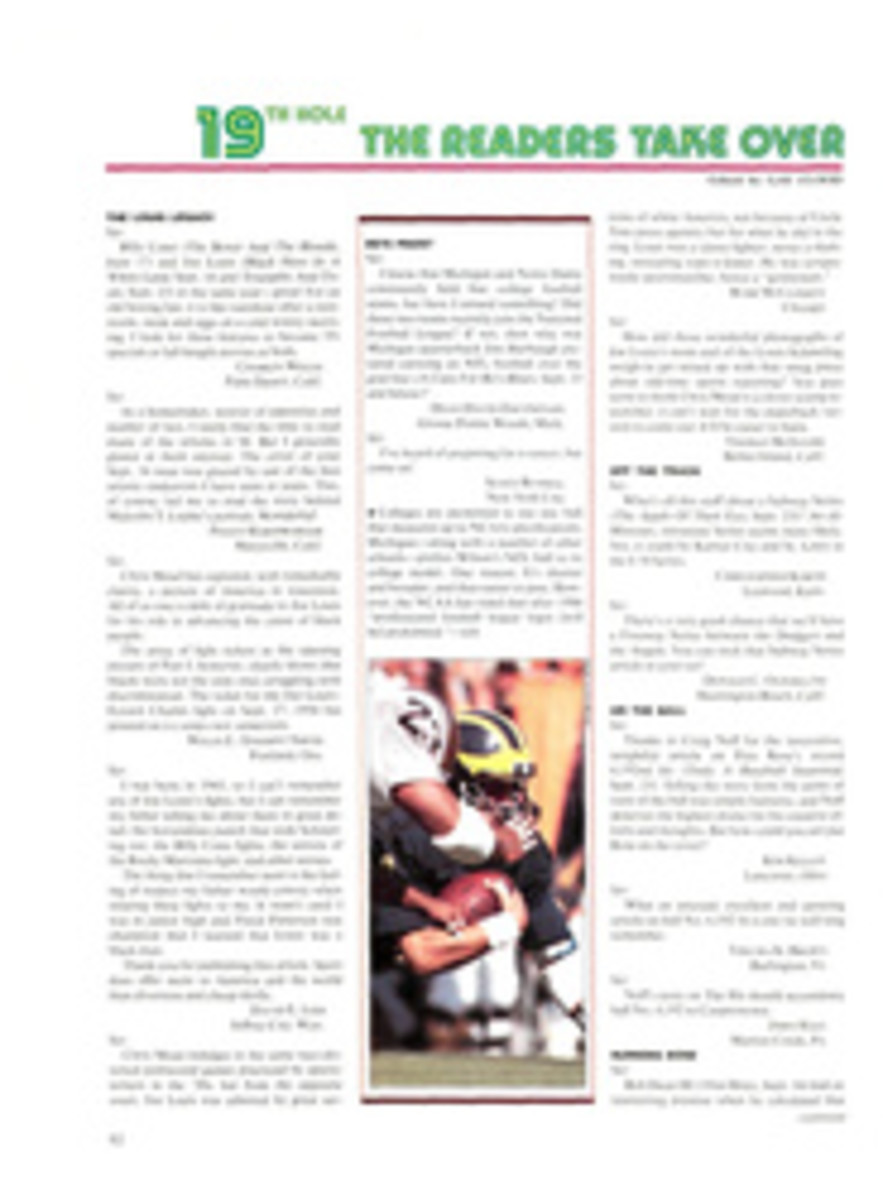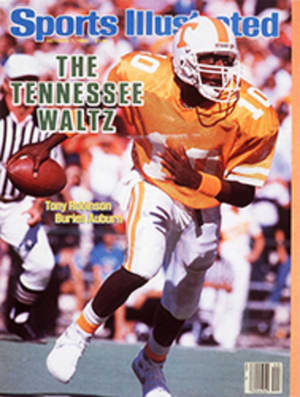
THIS SURGEON'S SKILL IS EVIDENT IN A DIFFERENT KIND OF HANDIWORK...
An unlikely combination of vocations keeps Joe Wilder, M.D. a very busy man. He's an athlete, a painter and the chief of surgery at Mount Sinai Hospital in New York City. Now, he's also an author, having put together a book that features 106 of his paintings, depicting 16 sports—all of the majors and many of the minors. Introducing the book is a long essay by Wilder about the three disciplines that obsess him—sports, art, medicine. He also invited 13 prominent men from diverse fields—baseball's Tom Seaver, basketball's Red Auerbach, medicine's John Bland, for example—to contribute their special knowledge. All of this has been combined in a handsome volume, aptly titled Athletes, by the prestigious art publishing house of Harry N. Abrams. Sleek, unique and bulging with disparate talents, the 176-page book is worth the $49.50. if you have a coffee table for it.
Wilder played baseball and football throughout his youth and was an All-America in lacrosse at Dartmouth. As a boy in Baltimore he spent endless hours slamming a lacrosse ball at a wall from both sides of his wiry, muscular body. He says that the resultant ambidexterity contributed greatly to his lacrosse success and has been an important asset in his work as a surgeon. Indeed, ambidexterity is only one of the physical and psychological attributes that contribute to excellence in his three favorite activities; some others, perhaps more obvious, are energy, dedication and the ability to observe things that others miss.
Wilder castigates young surgeons who, like some of his former teammates, refuse to master fundamentals: "One example is the use of scissors instead of a scalpel for dissection. Scissors are gross, crude instruments compared to the sweeping, efficient and graceful scalpel.... Using scissors is like painting with your fingers, using a scalpel like employing a delicate paintbrush."
Wilder's belief in the importance of the virtues he cites leads him to conclude that if Bill Bradley had dribbled down a different fork in the road and had taken up medicine he would today be "implanting mechanical hearts." Likewise, artist Willem de Kooning "would be a superb neurosurgeon" and Al Davis "a brilliant president of a medical school." Wilder says he is "sure" of this because "I have been there. As an athlete, a painter and a surgeon, I have lived in these worlds intensely and fully." In these and other aspects of Wilder's essay, there is a large ego at work.
Wilder's 13 coauthors were asked to describe the qualities that define the champions in their respective sports, and this has led, in too many instances, to talk about "peripheral vision" and "character" and "motivation" and other similarly predictable matters. Listing physical factors like slow-or fast-twitch muscle fibers or hand-eye coordination becomes a redundancy, and guessing about psychological matters is just that—guessing. As swimming coach James Counsilman puts it, "The personality of an individual is a very complex amalgam.... If it takes a psychiatrist many years to complete the analysis of a single individual, there is little hope we can fully understand an athlete by administering one or a series of psychological tests."
Some of the 13 dismiss their assignment quickly and go on to entertaining talk. Author Roger Kahn has some stories you may not have heard about his boys of summer; Seaver and former auto racer Sam Posey write especially well about their sports; Auerbach gives the cuff notes he uses at NBA drafts. Other contributors ignore their assignment completely. Novelist Wilfrid Sheed offers a delightful appreciation of pro football; newspaper columnist Ira Berkow's amusing anecdotes strike the right note in a discourse that tends to get heavy.
Wilder believes that his years of study in the dissection lab and his service as a surgeon are of incomparable value in portraying the human figure in action. That may be so. Curiously, however, the overwhelming impression I got from a first slow look at these 106 reproductions was not of their verisimilitude but of their enormous emotional content. This is surely the result of Wilder's experiences as an athlete and his admiration of the athletes he portrays. I much preferred his loose styles to the rigidity and finality of his oils. A sketch of Jack Dempsey, as opposed to the completed oil, is a perfect example. When Wilder sets out to do a portrait of, say, Rod Laver, and titles the finished work as just that, it is only fair to expect it will look like Laver; it doesn't. Furthermore, portraits of Joe Namath, Jimmy Connors, Mario Andretti and a few others do not look to me like Namath, Connors, Andretti and whoever, either. You may feel otherwise. In any event, this should not detract from your enjoyment of an extraordinary book.
...A STRONG LINEUP OF CONTRIBUTORS ADDS UP TO A WINNING ANTHOLOGY
Anthologies share common problems: Either the previously published material is so well known that you don't care to read it again and indeed already have a copy of it, or the material is so obscure (and poor) that it's not worth the money to add the anthology to your collection. And the selections reflect the tastes and prejudices of the editor, with whom you rarely find yourself in agreement. None of these criticisms applies to The Armchair Book of Baseball (Charles Scribner's Sons, $19.95), edited by John Thorn with illustrations by James Stevenson. Thorn is publications director for the provocative work done by the Society for American Baseball Research (SABR), and Stevenson is a witty, skillful author and cartoonist for The New Yorker magazine. Together, they have chosen wisely and well; if baseball is your bag, you'll find hours of armchair pleasure.
•Roger Angell sits next to 91-year-old Joe Wood and records his reminiscences of another time as they watch Yale's Ron Darling pitching against St. John's Frank Viola in an NCAA tournament game in 1981. Darling pitches 11 scoreless, no-hit innings and loses 1-0 in the 12th. Woven into Angell's story is an account of another classic confrontation that took place on Sept. 6, 1912. Wood, of the Red Sox, defeated Washington's Walter Johnson 1-0 for his 14th consecutive victory. Johnson had already set a 16-game winning streak, an American League record that still stands. Wood was 34-5 that season, with 10 shutouts and 16 victories in a row, and then won three of his four World Series appearances against the Giants. Angell blends all of this into classic reportage.
•Gay Talese's haunting profile of Joe DiMaggio, written in 1966, requires not a word of significant updating. As he still does, DiMaggio resisted being interviewed about anything except the most impersonal aspects of his life and baseball career. But he could not avoid being observed and appraised with honesty and compassion by Talese. The result is a treasure of sportswriting.
•Another kind of hero was pitcher Bruce Gardner, who won 40 games for USC—more than Tom Seaver, Bill Lee, Jim Barr or Steve Busby (all Trojan alumni)—and was named a first-team All-America for 1960. After a frustrating professional career, Gardner killed himself in 1971, putting a gun to his head one June night while alone on his old college baseball diamond. In a model of the reporter's art, Ira Berkow and Murray Olderman portray this American tragedy.
•Humor has been a key ingredient of baseball writing for more than a century, and it is not slighted in Armchair. From Abbott and Costello's version of Who's on First? (which they didn't write), and Russell Baker's fanciful career-counseling session with George Steinbrenner (" 'Mr. Steinbrenner,' I explained, 'I want to study firing and I want to study under the best man in the field. Will you help me learn?' ") through an excerpt from Ring Lardner's You Know Me Al, fun with the game is well served.
•The best biography ever written about a baseball figure is Robert W. Creamer's Babe, published in 1974. Here, in clear, clean prose, is an excerpt about the last days and hours of the greatest player the game has known. On June 13, 1948, for ceremonies marking the 25th anniversary of the House That Ruth Built, the Babe made his last visit to Yankee Stadium. He was dying of cancer. After meeting old teammates and making a brief speech to the crowd, he was helped down into the dugout and along the runway to the clubhouse. There he greeted Joe Dugan, Yankee third baseman during Ruth's playing years. They sat and had a drink together. Creamer writes:
"How are things, Jidge?" Dugan asked.
"Joe, I'm gone," Ruth said. "I'm gone, Joe."
He started to cry, and Dugan did too.
•Scientist and science writer Stephen Jay Gould draws on his expertise as a paleontologist for an erudite explanation of "The Extinction of the .400 Hitter." In an excerpt from Only the Ball Was White, Robert Peterson pays tribute to that giant of black baseball, Josh Gibson.
The list and variety of treasures in Armchair—there are 63 items to choose from—are immensely gratifying. If your pleasure palls, simply turn the page.
ILLUSTRATION
JOE WILDER

